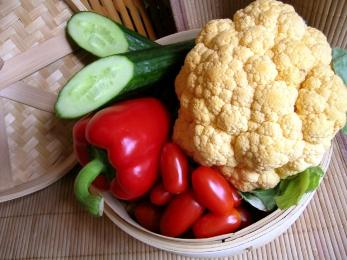High blood pressure is always a health concern, especially for a pregnant woman and her unborn baby. A woman’s doctor will determine whether she should take medications, but there are things a woman can do to help lower her high blood pressure, including exercise and diet. This involves more than not salting food; it also restricts foods that are high in sodium and increases foods that help lower blood pressure.
DASH Diet
The National Heart, Lung and Blood Institute (NHLBI) developed a diet to help lower the salt and sodium intake that affects blood pressure. Known as the DASH Diet (Dietary Approaches to Stop Hypertension) it focuses on whole grains, fruits and vegetables, low-fat diary and meat products. The DASH Diet not only limits sodium intake, it also recognizes the three minerals that aid in controlling blood pressure: calcium, magnesium and potassium.
Foods on the DASH Diet
The following food list is the DASH Diet for a 2000 calorie diet; all pregnant women should check with their doctor to determine their daily caloric requirements. Grains: 7 to 8 servings. Vegetables: 4 to 5 servings. Fruits: 4 to 5 servings. Lowfat or fat-free dairy: 2 to 3 servings. Meat, poultry and fish: 2 or less servings. Nuts, seeds and dry beans: 4 to 5 servings per week. Fats and oils: 2 to 3 servings. Sweets: 5 per week.
Mineral-Rich Foods
Potassium and calcium are important for maintaining blood pressure. Potassium is found in bananas, beans, tofu and potatoes. Avoid boiling vegetables as it will reduce the amount of potassium; steam, bake or roast them instead. Calcium is extremely important for pregnant women. According to CalciumInfo.com, a recent survey by the Journal of the American Medical Association stated that pregnant women needed 1,500 to 2,000 mg of calcium daily. Beyond including low-fat and fat free dairy products in your diet, other foods that contain calcium include dark green leafy vegetables, blackstrap molasses, celery, broccoli, cabbage, summer squash, green beans, Brussel sprouts, oranges and asparagus.
Limit Sodium
The American Heart Association recommends less than 2,300 mg (1 tsp.) of sodium daily and people with heart disease should consume less than 2,000 mg of sodium daily. Pregnant women with high blood pressure should talk with their doctor about their specific sodium requirements.
More Than Table Salt
Salt comes in more forms than simply the granulated type. Most canned and processed foods are high in sodium; eating more fresh and frozen foods will help reduce sodium intake. Be specific when ordering food at a restaurant. Look for sodium in its various forms on ingredients lists, including sodium chloride, sodium citrate and sodium bicarbonate. Recognize sodium terms on packages: sodium free means less than 5 mg per serving; low sodium means 140 mg or less; very low sodium means 35 mg or less; reduced or less sodium means at least 25 percent less per serving; and light sodium means that the sodium is reduced by at least 50 percent.





